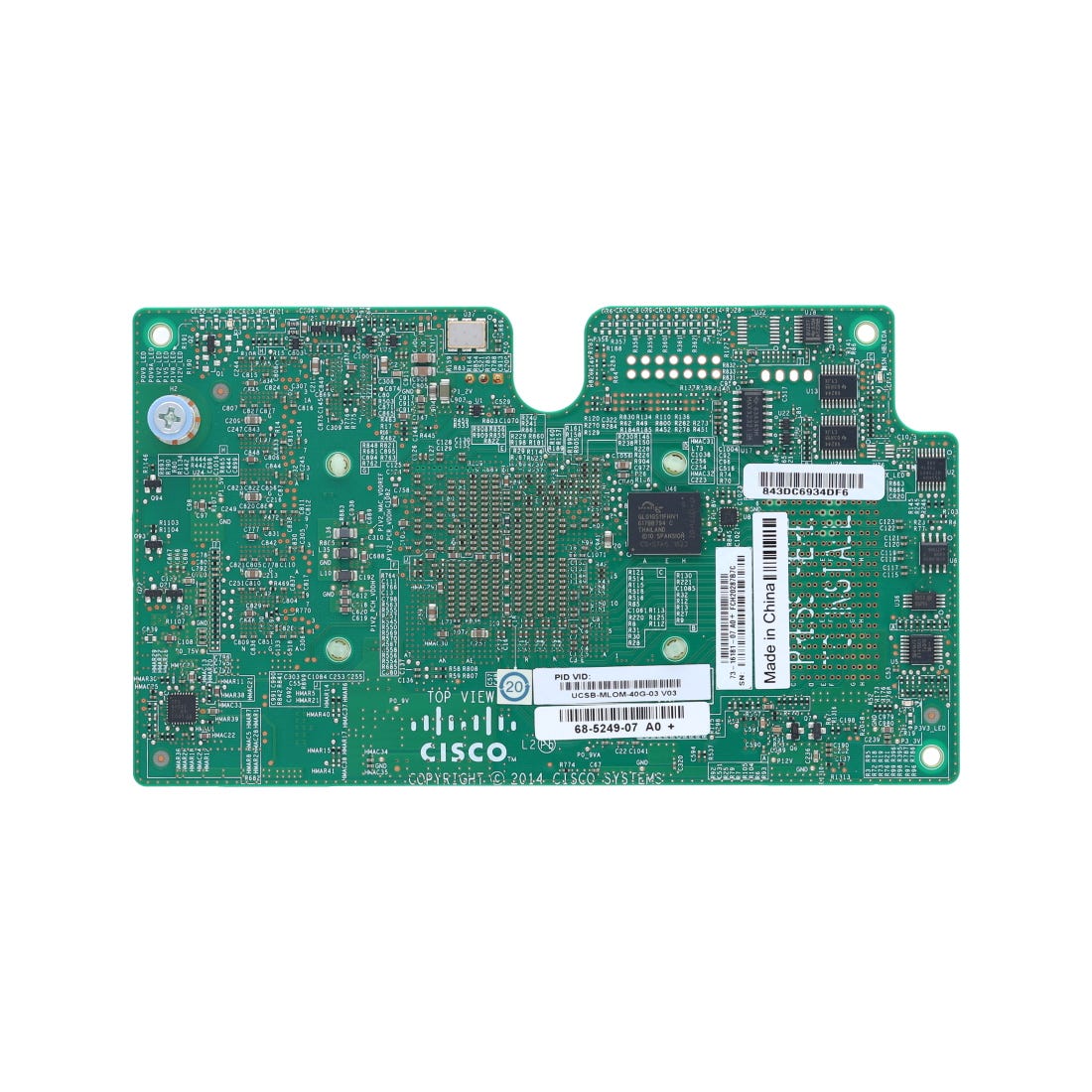Superior Flexibility and Network Performance The Cisco UCS Virtual Interface Card (VIC) 1340 is a 2-port, 40 Gigabit Ethernet, Fibre Channel over Ethernet (FCoE)-capable modular LAN on motherboard (mLOM) mezzanine adapter. This innovation is designed exclusively for the B200 M3 and M4 generation of Cisco UCS B-Series Blade Servers. Features and Capabilities The Cisco UCS VIC 1340 offers stateless and agile server infrastructure, allowing for on-demand creation and use of interfaces. The card's personality is determined at boot time using the associated service profile, which specifies the number of PCIe interfaces, their type (vNIC or vHBA), identity (MAC address) and World Wide Name (WWN), failover policy, bandwidth, and quality-of-service (QoS). Next-Generation Data Center Features The hardware classification engine of the Cisco UCS VIC 1340 supports advanced data center requirements, including: Stateless network offloads for Virtual Extensible LAN (VXLAN) and Network Virtualization using Generic Routing Encapsulation (NVGRE) Low-latency features of the Cisco user-space NIC (usNIC) High-bandwidth protocol RDMA over Converged Ethernet (RoCE) Performance-optimization applications such as Virtual Machine Queue (VMQ), Intel Data Plane Development Kit (DPDK), and Netflow VXLAN VXLAN enables overlay networks for virtual machines (VMs), allowing them to communicate or move between hosts within or between your data centers. It encapsulates Layer 2 frames within Layer 3 UDP packets, making the entire infrastructure appear as a local Layer 2 network. NVGRE NVGRE is a network virtualization technology that attempts to alleviate the scalability problems associated with large cloud computing deployments. It uses Generic Routing Encapsulation (GRE) to tunnel Layer 2 packets over Layer 3 networks. usNIC User space NIC improves the performance of software applications that use the Message Passing Interface (MPI) instead of sockets or other communication APIs. It does this through bypassing the OS kernel when sending and receiving networking packets. The applications interact directly with a Cisco UCS VIC, which improves the networking performance of your high-performance computing application. RoCE RoCE is a high bandwidth, low-latency protocol that has lower CPU utilization than traditional TCP/IP. It is targeted for HPC and Microsoft's SMB Direct (Windows Server 2012/R2) environments. VMQ Virtual Machine Queue is a hardware virtualization technology for the efficient transfer of network traffic to a virtualized host OS. It uses DMA to transfer all incoming frames that should be routed to a receive queue to the receive buffers that are allocated for that queue. DPDK DPDK is designed for fast-packet processing on Intel Xeon processors. It is a set of software libraries that improves packet processing performance for the most demanding applications commonly found in telco and service provider networks. NetFlow NetFlow efficiently provides a key set of services for IP applications, including network traffic accounting, usage-based network billing, network planning, security, and network monitoring capabilities, such as Denial of Service (DoS). NetFlow provides valuable information about network users and applications, peak usage times, and traffic routing. Cisco invented NetFlow, and is a leader in IP traffic flow technology.
